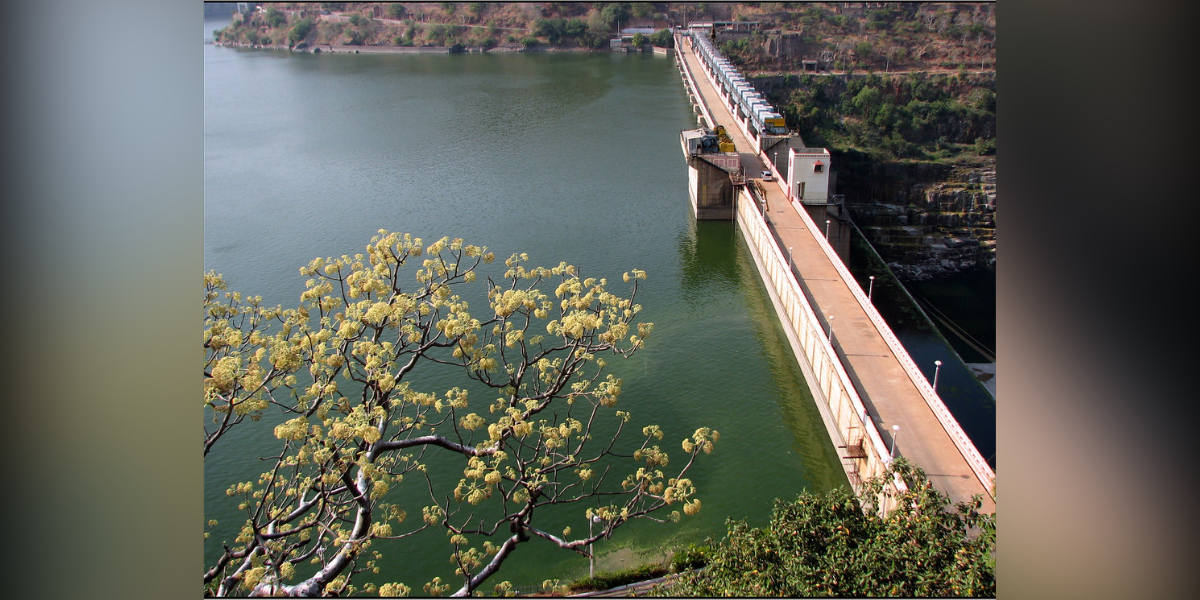The court said that it allowed the government to go ahead with the project to ensure that people are not burdened by drinking water problems.

The PRLIS project envisaged lifting 90 TMC of flood water in 60 days during the flood season from the foreshores of Srisailam reservoir on Krishna river. (Wikimedia Commons)
In a major relief for the Telangana government, the Supreme Court on Friday, 17 February, gave its nod to the Palamuru-Rangareddy Lift Irrigation Scheme (PRLIS) and allowed Telangana to carry on drinking water component works up to 7.15 TMC, as per environmental clearances.
The court said that it facilitated the Telangana government to go ahead with the PRLIS project so as to ensure that the people are not burdened by drinking water problems.
It clarified that its decisions regarding the project would be based on merit only.
The court has also issued notices to those associated with the case and asked the government to file a counter.
It has also issued a stay on the ₹528-crore penalty imposed on the government by the National Green Tribunal (NGT) a few weeks ago.
The court gave these directions while responding to a petition filed by the Telangana government, challenging the order given by the NGT.
According to officials, Mahabubnagar, Nagarkurnool, Gadwal, Narayanpet, and Wanaparthy districts are the worst drought-prone areas.
There is a tremendous shortage of drinking water and the available water is affected by fluoride. As the fluoride content was twice the permissible limit for drinking water, a large part of the population had to migrate to other parts of the country. The drought condition was adding to the agony.
In order to redress the situation, the Telangana government took up the PRLIS project to alleviate the misery of these drought-prone areas.
The aim is to benefit 1,226 villages where about 50 lakh people will get drinking water. In addition, 12.30 lakh acres of agricultural land will also get irrigated.
This makes the PRLIS project extremely important for the above five districts. It was awarded in April-May 2016 through a tender process, as the scheme intended to supply much-needed drinking water to the upland areas of Telangana.
The PRLIS project envisaged lifting 90 TMC of flood water in 60 days during the flood season from the foreshores of the Srisailam reservoir on the Krishna river through five separate stages.
Each of the five stages comprises a reservoir and canals/tunnels between each reservoir to take the water forward.
The five stages would include an approach channel from the existing Srisailam reservoir to the pumping station with a tunnel that lifts the water to the proposed Anjanagiri reservoir at Narlapur village.
The second lift has a similar approach channel connected to a canal and pumping station with a tunnel that lifts the water from the proposed Anjanagiri reservoir to the proposed Sri Veera Anjaneya reservoir at Yedula.
The third lift is from the Sri Veera Anjaneya reservoir through a pumping station with tunnels and canals to fill the proposed Venkatadri reservoir at Vattern village, as well as the Kurumurthyraya reservoir at Karvena village.
The fourth lift is with a canal and pumping station with tunnels to take water from the Kurumurthyraya reservoir to the proposed Udandapur reservoir.
And finally, the fifth lift is from the proposed Udandapur reservoir through canals and a pumping station to the proposed KP Lakshmidevipally reservoir.
As per the Terms of Reference, the project will be implemented in two phases.
Phase 1 would be the drinking water component, which envisages the lifting of 90 TMC of flood water in 60 days during the flood season and providing water to 1,226 villages and 70 mandals of erstwhile Mahabubnagar, Rangareddy, and Nalgonda districts.
Phase 2 is the irrigation component in which a canal network will be developed from reservoirs to create irrigation facilities for upland areas of erstwhile Mahabubnagar, Rangareddy, and Nalgonda districts for an ayacut of 4,97,976 Ha.
The stored water is to be used for irrigation purposes in various districts through a network of canals.
In addition to the drinking water facility, the water would be used for irrigation also. It is specifically stated that no forest land is involved in the proposed project.

Jul 26, 2024

Jul 26, 2024

Jul 26, 2024

Jul 26, 2024

Jul 25, 2024

Jul 25, 2024